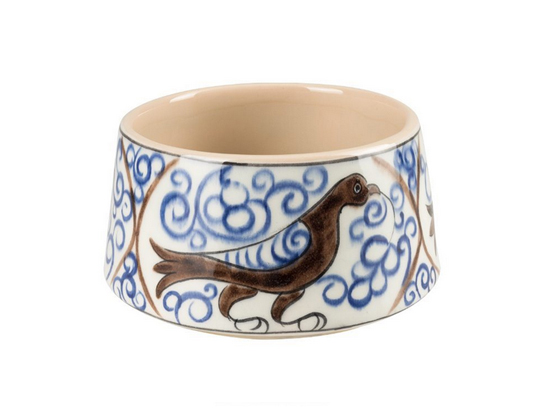
Anatolia has been an important center for soil arts throughout history. Ceramic works have been among the national arts of the Turks since Central Asia. Soil arts were further developed with the use of materials and techniques specific to Anatolia during the Seljuks and Ottomans and spread from all over the world. Tile used in architecture and ceramic works used in pots and pans have developed in parallel. MS. 9-15.yy. Byzantine Ceramics with olive green and yellow glaze are red paste, white slipped ceramics made with the primer scraping (Sgrafitto) technique. Seljuk ceramics and ceramics showed great improvements especially between the 13th and 14th centuries, and rich color and patterned works were produced using hunting scenes, animal and human figures. Tile art, which developed depending on the architecture, entered Anatolia with the Seljuks and gave successful examples. Early Ottoman Iznik Ceramics 14th century. mid-15th century Produced until the end of the year, ceramics and tile works in Ottoman Art were constantly developed with breakthroughs in patterns and colors. 15th century and 16th century The blue-white ceramics made at the beginning are superior ceramics with their hard and smooth pastes, their ingenious patterns. Chinese-style peonies, rumis and hatayîs, chinese motifs are used in the patterns processed under transparent glaze with shades of blue. Various flowers such as tulips, carnations, grapevines and spring branches, bird, deer, rabbit, fish, animal fighting scenes, galleons, prophecy and kufic writings are seen in the 16th century Ottoman tiles and ceramics, which have developed in an unprecedented richness and delicacy. After the 17th century, the production quality of Iznik tiles and ceramics has deteriorated, the motifs and patterns have been deformed, the colors have become dull, and the production has almost ended in the 18th century. The tile and ceramic art of the Ottoman Empire continues to be produced with the same care, meticulousness and love in the workshops that do not exceed a few, using the production technique in the 14-17th centuries.
Diameter: 10 cm
Height: 7 cm
© 2020 All Rights Reserved - Yıldız Ada